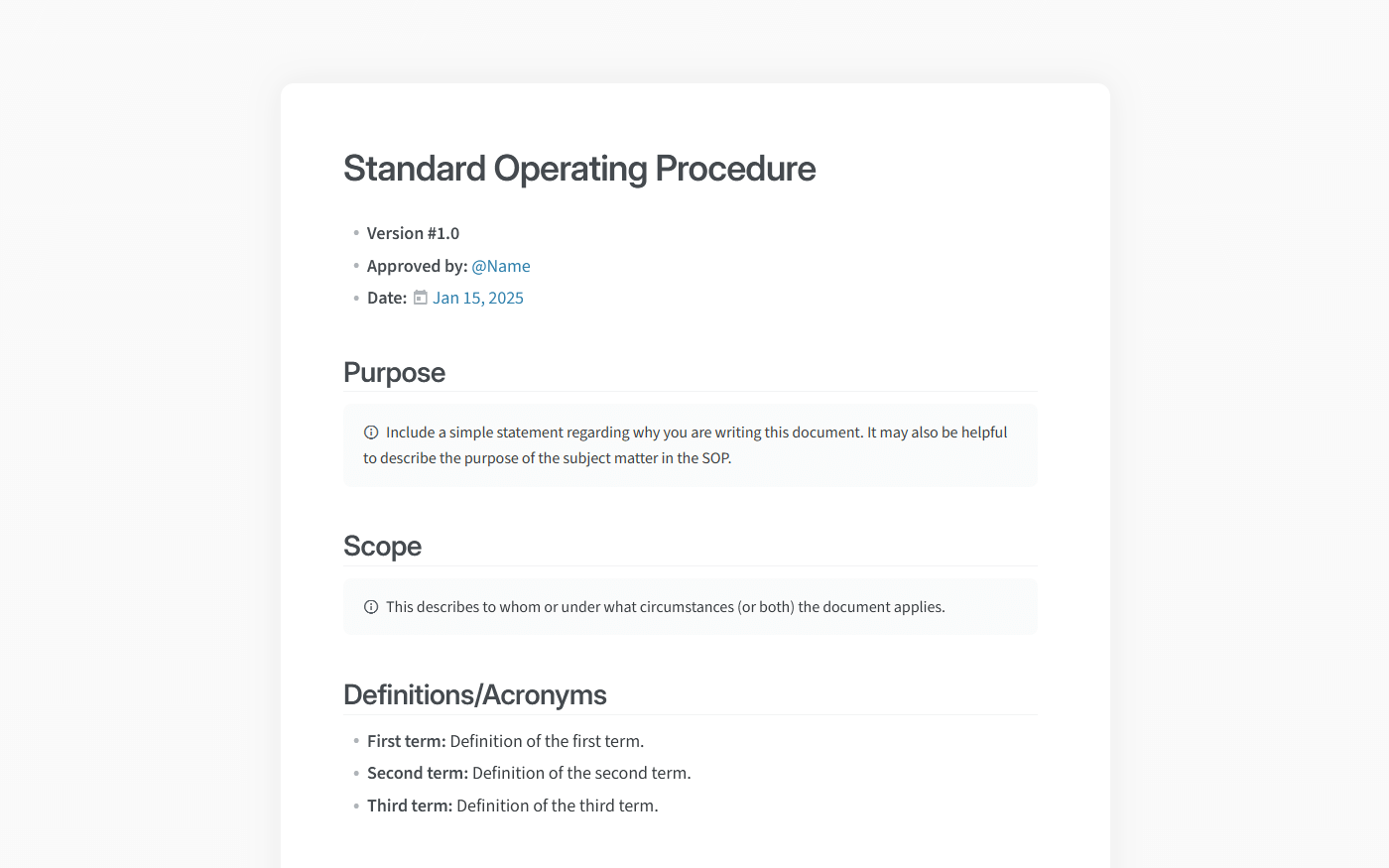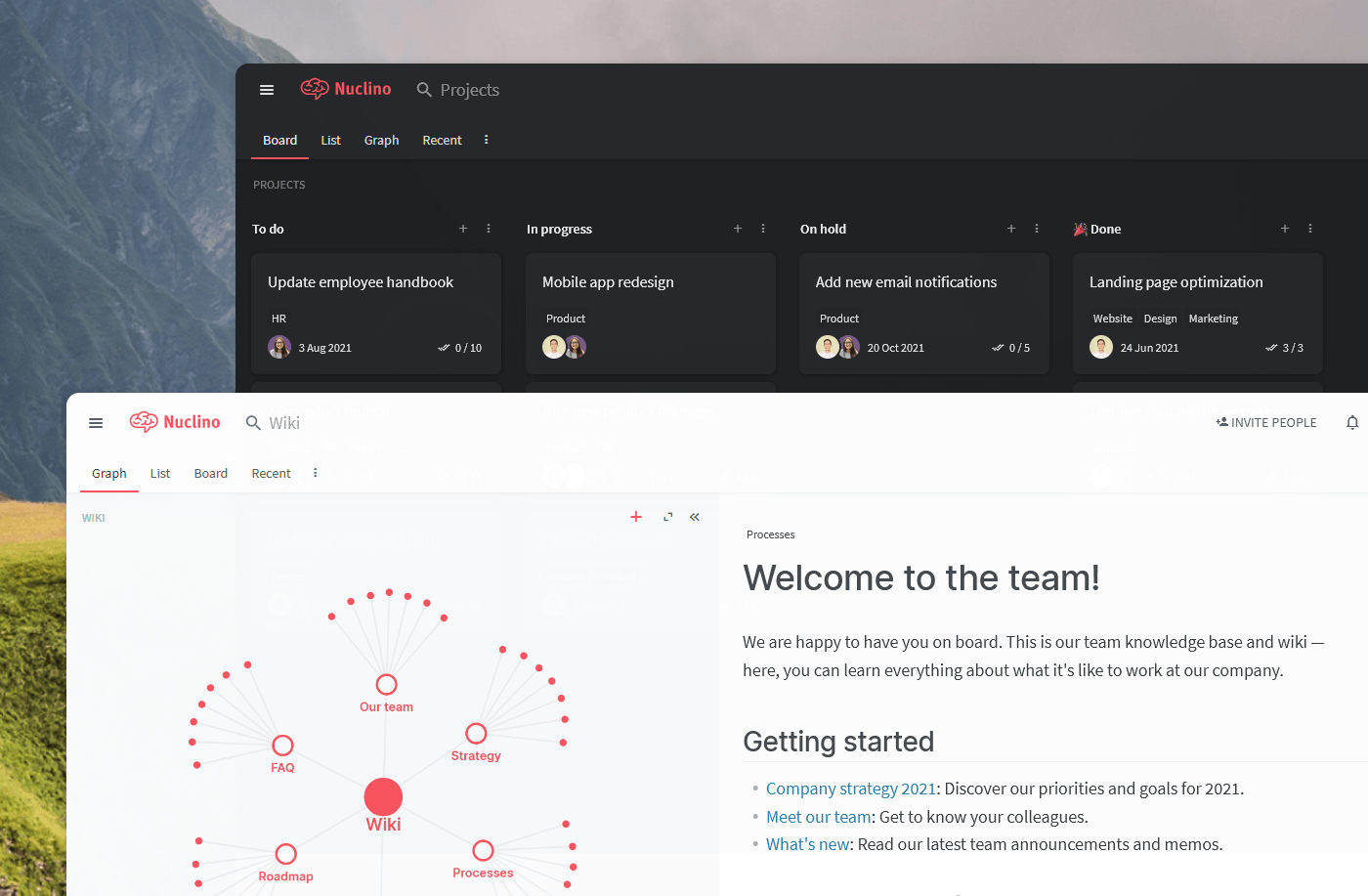An Essential Guide to Process Mapping
Create a visual top-down view of how your business works.
Every business is made up of interconnected processes – from manufacturing products and fulfilling purchase orders to onboarding new employees and filing paperwork. The better you understand how your organization operates, the better you can manage it.
Unfortunately, the vast majority of these processes are not properly documented. Often, business processes only exist in the form of tribal knowledge and are passed from employee to employee through word-of-mouth. Everyone is only familiar with the processes in their own domain and the big picture gets lost.
Is your business running efficiently? Is there room for optimization? Who knows.
This is where business process mapping comes in. Let's dive deeper into what process mapping is and how it can be used to optimize your business operations.
- What is process mapping?
- Benefits of business process mapping
- How to create a process map
- Process mapping best practices
- Process mapping symbols

What is process mapping?
Process mapping is a technique commonly used for capturing how a business process works. A process map is often visualized in the form of a flowchart, which highlights every step, decision, and task involved in a process.

Sales process map example
Process maps help organizations get a high-level overview of how every process works and identify improvement opportunities. They are an essential part of process documentation and are often included in SOP documents. Here's an example of a process mapped and documented in Nuclino.

Process mapping example (created in Nuclino)
Nuclino is a unified workspace where you can collaborate on internal documentation, manage projects, onboard new employees, take meeting minutes, collaborate on documents, and more. It works like a collective brain, allowing you to bring all your team's work together in one place and collaborate without the chaos of files and folders, context switching, or silos.
Benefits of business process mapping
The high-level purpose of business process mapping is to improve organizational efficiency. Creating process maps enables companies to:
Simplify complex workflows. Process mapping helps break down the complexity of processes and makes them easier to understand through visual communication.
Measure and optimize the efficiency of processes. Clearly defining processes makes it easier to identify problem areas that need streamlining, such as bottlenecks, capacity issues, or delays.
Improve communication and increase transparency. Documenting and mapping processes facilitates knowledge sharing between employees and departments. It clarifies what work needs to be done and who is responsible for what.
Maintain consistent quality. Once a process has been mapped and optimized, it can be used as a best practice, bringing consistency and uniformity to the way processes work within the organization.
Solve problems faster. Spotting the problem is easy, but it's not always the case for identifying the root cause. A process map visualizes the entire process and makes it a lot easier to understand what, exactly, went wrong.
Onboard new employees. Going over process maps is a great way for new team members to gain insight into how your organization operates, instead of tapping on shoulders or learning by trial and error.
How to create a process map
Process mapping is not a challenging task, as long you follow the right approach. To make sure you map the process accurately, involve all relevant stakeholders – this includes those who will be responsible for managing the process, as well as those who will be running the process as part of their day-to-day work.
Step 1: Identify the process
Start by determining the basics and setting the high-level constraints for the process you are planning to map:
What process do you want to map?
What is the ideal outcome of the process?
What is the scope of the process? Where does it begin and end?
Step 2: Gather information
Even if you think you know your business inside out, you’ll still want to do your research. Work together with the employees who will be involved in the process you are mapping and gather as much information as possible. Err on the side of collecting too much information and filter it down later. Aim to find high-level answers to the Five Ws:
Who is involved in the process?
What tasks need to be executed?
When does each step take place?
Where does each step take place?
Why are these steps necessary to complete the process?
Step 3: Define the activities involved
Put together a detailed list of all tasks that need to be executed in order to complete the process. Determine who will be responsible for each of them. When you name tasks, it's helpful to always start with a verb.
Step 4: Determine the sequence of steps
Take the list of tasks you prepared and arrange them in the correct order. Some tasks may only be necessary if a certain condition is fulfilled – make sure to note it down.
Step 5: Visualize the process
Now, on to the fun part! Use a diagramming or process mapping tool – such as Diagrams.net, Lucidchart, Gliffy, or Google Drawings – to visualize your process map. Each element in a process map is represented by a specific flow chart symbol. Make sure everyone in your organization knows what they mean.
Step 6: Document the process
The final step of process mapping is to document the result. No matter how pretty your flow chart looks, it will add no value if the intended audience can't find it when they need it. Don't let it get lost in your shared drive or gather dust in someone's desk drawer. Make sure all your processes are neatly documented in one central place that acts as a single source of truth for your team.
A great place to organize your process documentation is your internal wiki or a company intranet portal. For extra clarity, it's advisable to include a step-by-step guide explaining the process, in addition to the flow chart you create. Additional visuals or video tutorials can also be helpful for explaining the process. Depending on the type of process you are mapping, you may benefit from adding a screen recorder, an annotation tool, or a walkthrough app to your toolset.
Process mapping symbols
A process map flow chart visualizes the process using process mapping symbols – actions, decision points, documents, databases, and so on. Make sure that you and your team clearly understand what each process mapping symbol means and use them consistently.

Process mapping best practices
Every organization may have a slightly different approach to process mapping, but there are several universal best practices that work for all:
Look at the big picture and strive to keep sub-processes simple.
Review the process map regularly and keep it up-to-date.
Encourage your team to provide continuous feedback.
Create ownership with single points of contact where feasible.
Note exceptions and irregular cases as they come up and document them.
Business process mapping is not a one-time project. Continuous process optimization requires constant monitoring and regular reviews. It's also something you can't undertake alone – getting a buy-in from your team is essential. However, your efforts will pay off, and when done right, process mapping can help you standardize and optimize your workflows, onboard new colleagues, and create a shared understanding across the team.
Nuclino: Your team's collective brain

Nuclino brings all your team's knowledge, docs, and projects together in one place. It's a modern, simple, and blazingly fast way to collaborate, without the chaos of files and folders, context switching, or silos.
Create a central knowledge base and give your team a single source of truth.
Collaborate in real time or asynchronously and spend less time in meetings.
Manage and document your projects in one place without losing context.
Organize, sort, and filter all kinds of data with ease.
Integrate the tools you love, like Slack, Google Drive, Figma, Lucidchart, and more.
Ready to get started?
